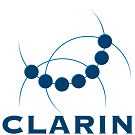Spelling and grammar
Spelling
Dutch Word List (‘Groene Boekje’)
The Dutch Language Institute is an authority in the field of spelling. Since 1995, the institute (then: Institute for Dutch Lexicology) has been compiling the ‘Word List of the Dutch Language’ for the Dutch Language Union: an overview of the official spelling of Dutch words. In its printed form, the Word List is better known as het Groene Boekje (‘the green book’). The most recent edition was released in 2005.
Woordenlijst.org
The Word List of the Dutch Language is online available for free at woordenlijst.org. In 2015, the online version grew from approximately 100,000 entries to roughly 168,000 entries. All words from the previous printed edition have been retained.
The newly added words are derived from text files collected at the Dutch Language Institute, containing newspaper texts, literary texts and texts from the internet. In addition, a selection was made from all words that had been looked up in vain in the online Word List.
Since 2015, woordenlijst.org has been updated several times a year with hundreds of new words. At the end of 2019 it contained a total of 186,000 words. With all plural forms, diminutive forms, past tenses and past participles, the digital version of the Word List now contains information about approximately 680,000 word forms.
Spelling Certification Mark
The Spelling Certification Mark (Keurmerk Spelling) is a guarantee given by the Union for the Dutch Language (Nederlandse Taalunie) that a reference work can be used to look up the official spelling.
For the automatic spell check of word lists (for example provided by dictionary suppliers), the Dutch Language Institute uses the Spelling Certification Mark, also known as the HulK. Our spelling specialists manually correct the words the HulK does not recognize and add these to our own material. From then on the words can be processed automatically.
Any word list compiled in accordance with the rules and principles of the official spelling receives the Spelling Certification Mark.
Spelling tools
- PICCL: The Text-Induced Corpus Clean-up (TICCL) online processing system is part of PICCL (Philosophical Integrator of Computational and Corpus Libraries). TICCL performs spelling correction and OCR post-correction.
Grammar
e-ANS: Dutch grammar
The General Dutch Grammar, or ANS (Algemene Nederlandse Spraakkunst), is the go-to reference grammar for the Dutch language. It is the most extensive description of the grammatical aspects of contemporary Dutch. Its target users are both native speakers and foreign speakers learning Dutch. The ANS was born out of a Belgian-Dutch cooperation and was first printed in 1984. The second and revised 1997 edition was digitized, resulting in the e-ANS.
Lately, the Dutch Language Institute (INT) has been working on a new, user-friendly website for the ANS, while work was started on the revision of its contents by the Leiden University Center for Linguistics (LUCL), Ghent University, KU Leuven and Radboud University Nijmegen.
From 2020 onwards, the further revision of the contents will also be coordinated by the INT. The first revised chapters of the General Dutch Grammar will appear online in 2020, describing prepositions, word order and negations, among other subjects.
Taalportaal
Taalportaal (or Language Portal) collects the existing information on the grammars of Dutch, Frisian and Afrikaans and makes this information easily accessible in a scientifically sound way. Such a language portal is unique in the world. Three core domains traditionally distinguished in grammar – phonology, morphology and syntax – have been integrated into one portal, using extensive cross referencing to ensure optimal linking. This offers interesting opportunities for linguists to discover relations and connections between linguistic phenomena that have remained hidden until now.
The Taalportaal website is in English, enabling researchers who are not proficient in Dutch, Frisian or Afrikaans to study these languages.
